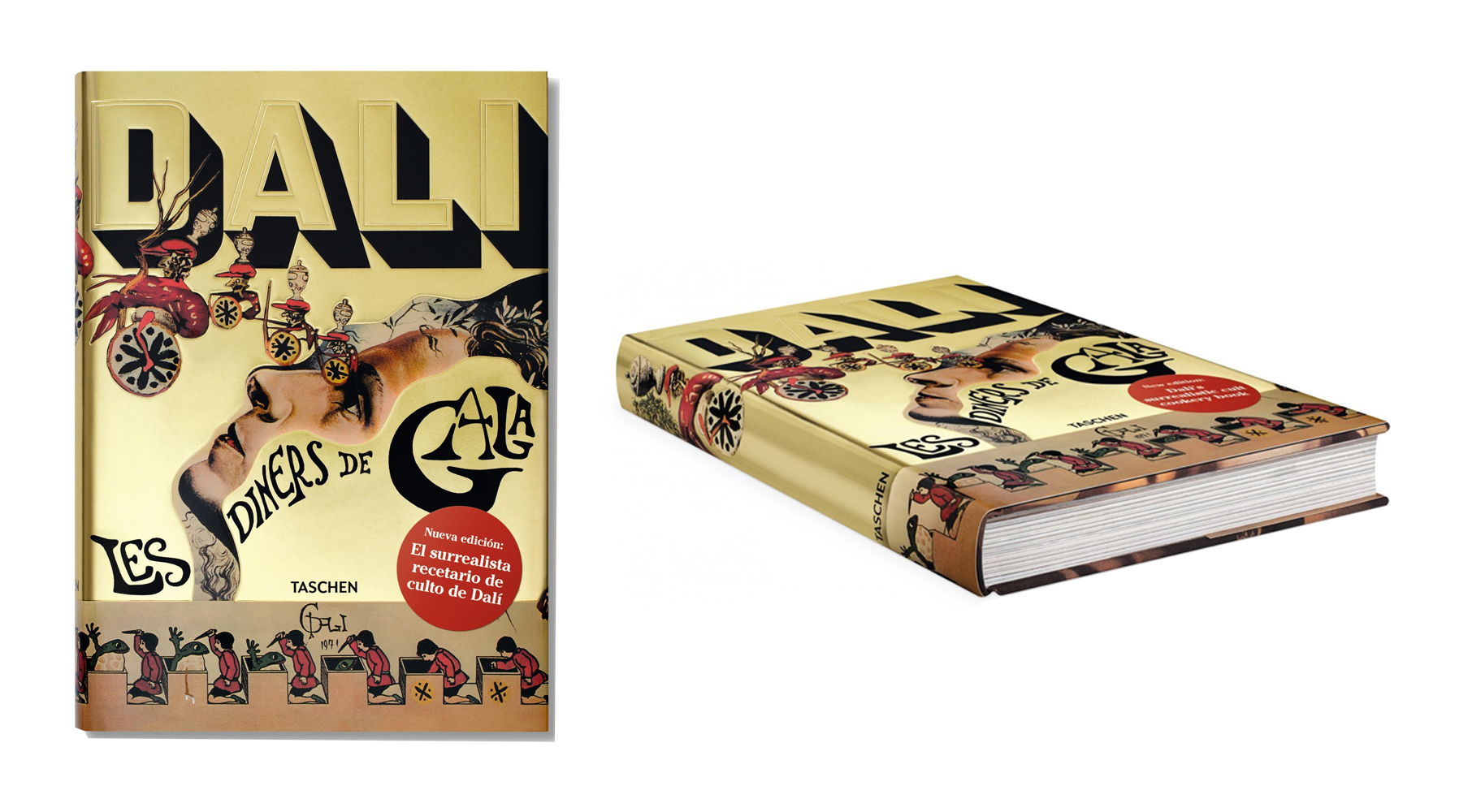His full name was Salvador Doménech Felipe Jacinto Dalí, but he was internationally known as Salvador Dalí. The artist from Figueres was eccentric, brilliant and, above all, multifaceted: he dedicated his life with the same passionate spirit to painting, jewellery, performance and even gastronomy. It was in his famous dinners where this genius released all his imagination through sensual ingredients and exotic culinary presentations. Such sumptuous encounters, in which he created real multisensory experiences, were captured by the book Les Diners de Gala – Gala’s dinners – published in 1973 and currently reedited by Taschen.

For the first edition, only 400 copies were released (their current value is more than a thousand euros) and they came to life thanks to the collaboration of leading French chefs from stellar Parisian restaurants that were awarded with Michelin stars, such as Lasserre, La Tour d’Argent, Maxim’s and Le Train Bleu.
Enthusiasm for “the frame”
In this peculiar recipes collection (320 pages), Dalí offers instructions in order to elaborate 136 really extravagant meals: Conger of the Rising Sun, Frog Cream, Pig’s Ears Soup, The Breasts of Venus, or Thousand Year Old Eggs. Each recipe is accompanied by some pictures, illustrations and reflections that sum up to a whole which resembles a celebration of Dalí’s surrealist aesthetics. “The jaw is our best tool to grasp philosophical knowledge”, states Dalí; later he expresses his enthusiasm for what he calls “the frame”: “I love eating frames, in a word, everything that is considered crustacean”. That explains some recipes, like Snails Civet or Crayfish Pyramid with Viking Herbs.


In Les Diners de Gala, the index features 12 chapters in which the amazing proposals are presented: in “’Autumnal Cannibalism’”, Dalí gives free rein to his preference for eggs and crustaceans; in “Monarchy Chairs”, he releases his formulas for birds; and in “I eat Gala” he focuses on aphrodisiacs. The whole is a visual feast that ignores food deprivations, as the master warns in the prologue:
“We would like to clarify that, from the first recipe, Les Diners de Gala, with its precepts and illustrations, is exclusively dedicated to pleasures of taste. Do not expect to find dietetic formulas here.
We have the intention of ignoring gastronomy’s chemistry. If you happen to be a disciple of such diets that reveal the calories and transform the pleasure of eating into suffering, please close this book immediately; this is a too vivacious book, too aggressive and too inappropriate for you.”

Vocation: chef
Dalí’s liking for cooking started when was really young: he told many times how he, at the age of 6, wanted to be a chef. Later, his attraction for gastronomy was present in some of his artworks (where fried eggs or bread basket are painted) or in statements like “I know what I eat, I don’t know what I do”. For the artist, food was something else: a source of creative inspiration and pleasure.

In “The Persistence of Memory” (1931), Dalí was inspired by the Camembert cheese to represent the melting clocks


The excesses of the genius were reflected in this gastronomic anthology, both in the odd style of his recipes, and in the presentation of the meals or the instructions, such as “How to devour Gala”. The delirium, the audacity and the beauty were masterfully caught in this book, that merges art and gastronomy for the most daring palates of the 21st century.
Traductor: Paloma Sánchez




